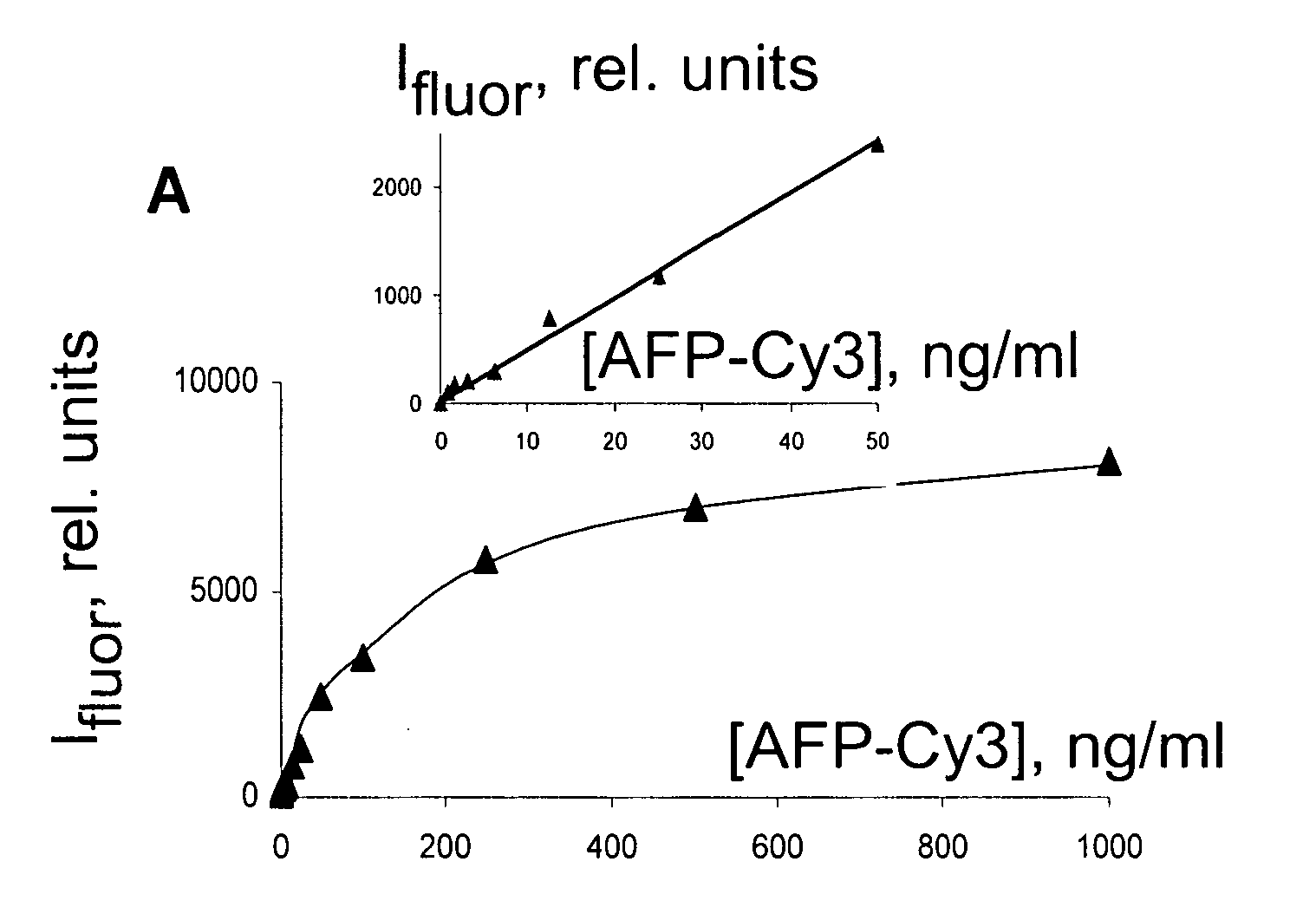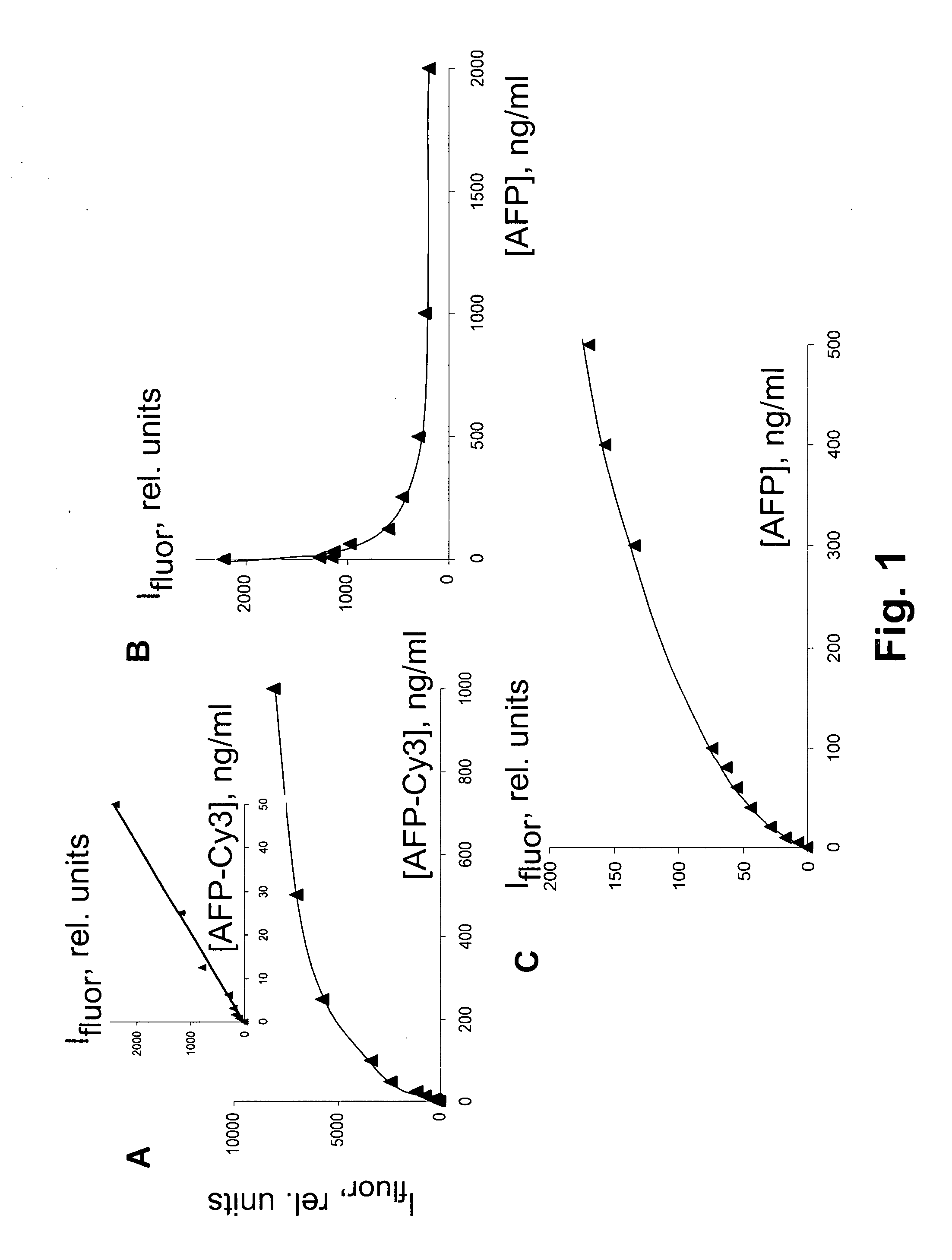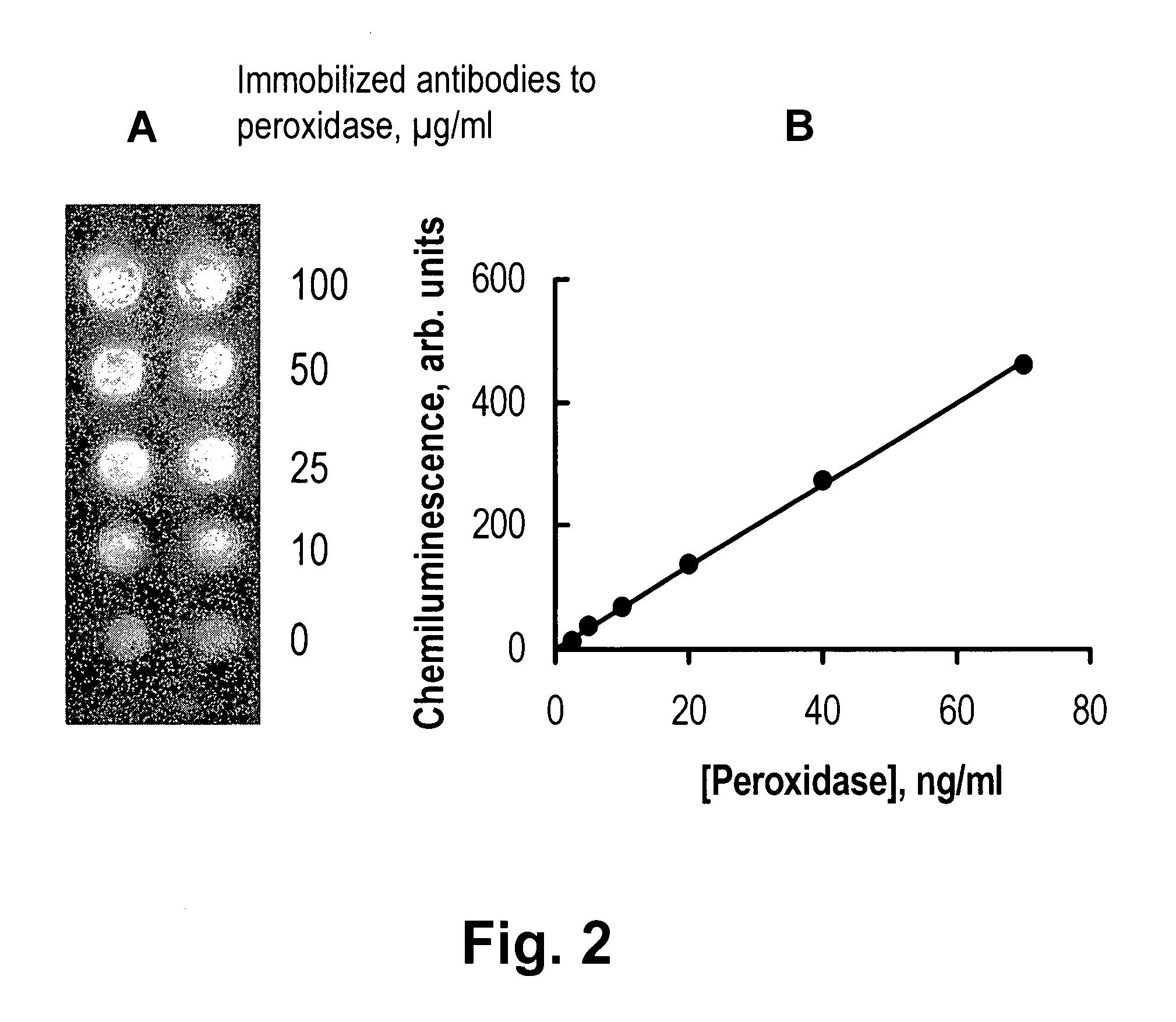Biological Microchip for Multiple Parallel Immunoassay of Compounds and Immunoassay Metods Using Said Microchip
a biochemical microchip and compound technology, applied in the field of biological microchips for multiple parallel immunoassays of compounds and immunoassay metods using said microchips, can solve the problems of low assay sensitivity, inability to test samples simultaneously for the presence of several compounds, loss of functional activity of proteins, etc., to achieve the effect of reducing the sensitivity of immunoassays, reducing the sensitivity of assays and reproducibility of results, and low and uncontroll
- Summary
- Abstract
- Description
- Claims
- Application Information
AI Technical Summary
Benefits of technology
Problems solved by technology
Method used
Image
Examples
example 1
Quantitative Immunoassay with the Use of Hydrogel Microchips
[0165] For quantitative immunoassay hydrogel microchips were prepared, containing elements with immobilized proteins (antibodies and / or antigens). For decreasing nonspecific interactions in all variants of the assay the microchips were preliminarily incubated in a 0.01 M phosphate buffer, pH 7.2, containing 0.15 M NaCl, 1% of polyvinyl alcohol (PVA-50) or in the same buffer, containing 3% of bovine serum albumin (BSA) and 4% of saccharose (“blocking buffer”), 2 hrs. at room temperature. Before carrying out the assay, solutions of an antigen (sample) were diluted with 0.01 M phosphate buffer, pH 7.2, by containing 0.15 M NaCl, 0.15% of PVA-50 and 0.15% of polyvinylpyrrolidone 360.
[0166] Direct immunoassay. Solutions of the fluorescently labeled antigen (for instance, of an oncomarker), 20 μl, were applied on microchips containing gel elements with immobilized monoclonal antibodies to the antigen under analysis and antibodi...
example 2
Immunoassay of α-fetoprotein
[0175] Quantitative determination of AFP is necessary in diagnostics and treatment of a number of cancer diseases and also for revealing pregnancy pathologies. On the example of α-fetoprotein (AFP) we illustrate different variants of immunoassay with the use of protein hydrogel microchips—direct, competitive, and sandwich-type immunoassay with fluorescent detection (FIG. 1).
[0176] For the direct assay, microchips with immobilized monoclonal antibodies against AFP were manufactured. After treating the microchips with fluorescently labeled AFP the dependence of the intensity of the fluorescence of the gel cells of the microchip on the concentration of the antigen was observed in the range of concentrations from 0.5 to 1000 ng / ml (FIG. 1A), the minimum determined AFP concentration was 0.5 ng / ml.
[0177] For the competitive assay, a microchip with immobilized AFP was used. The AFP solution was preliminarily incubated with Cy3-labeled monoclonal antibodies ag...
example 3
Chemiluminescent Registration of a Signal when Carrying Out Immunoassay with Use of Microchips
[0180] Microchips with immobilized monoclonal antibodies against horseradish peroxidase have been manufactured. 20 μl of peroxidase solutions of different concentrations in 0.01 M phosphate buffer, pH 7.2, containing 0.15 M NaCl were applied to the microchips, microchips were kept for 2 hours at room temperature, and then 20 μl of a mixture of chemiluminescent substrates (SuperSignal ELISA Pico Stable Peroxide, Luminol Enhancer, Pierce Corp., USA), containing luminol, hydrogen peroxide and the enhancer. During peroxidase-catalyzed oxidation of luminol, chemiluminescence with a maximum at 425 nanometers is observed. For registration of the signals a fluorescence microscope was used with the excitation light lamp switched-off, the exposure was 60 s. The measured intensity of the chemiluminescence of gel cells containing immobilized antibodies to peroxidase, was directly proportional both to ...
PUM
| Property | Measurement | Unit |
|---|---|---|
| size | aaaaa | aaaaa |
| volume | aaaaa | aaaaa |
| concentration | aaaaa | aaaaa |
Abstract
Description
Claims
Application Information
 Login to View More
Login to View More - R&D
- Intellectual Property
- Life Sciences
- Materials
- Tech Scout
- Unparalleled Data Quality
- Higher Quality Content
- 60% Fewer Hallucinations
Browse by: Latest US Patents, China's latest patents, Technical Efficacy Thesaurus, Application Domain, Technology Topic, Popular Technical Reports.
© 2025 PatSnap. All rights reserved.Legal|Privacy policy|Modern Slavery Act Transparency Statement|Sitemap|About US| Contact US: help@patsnap.com



